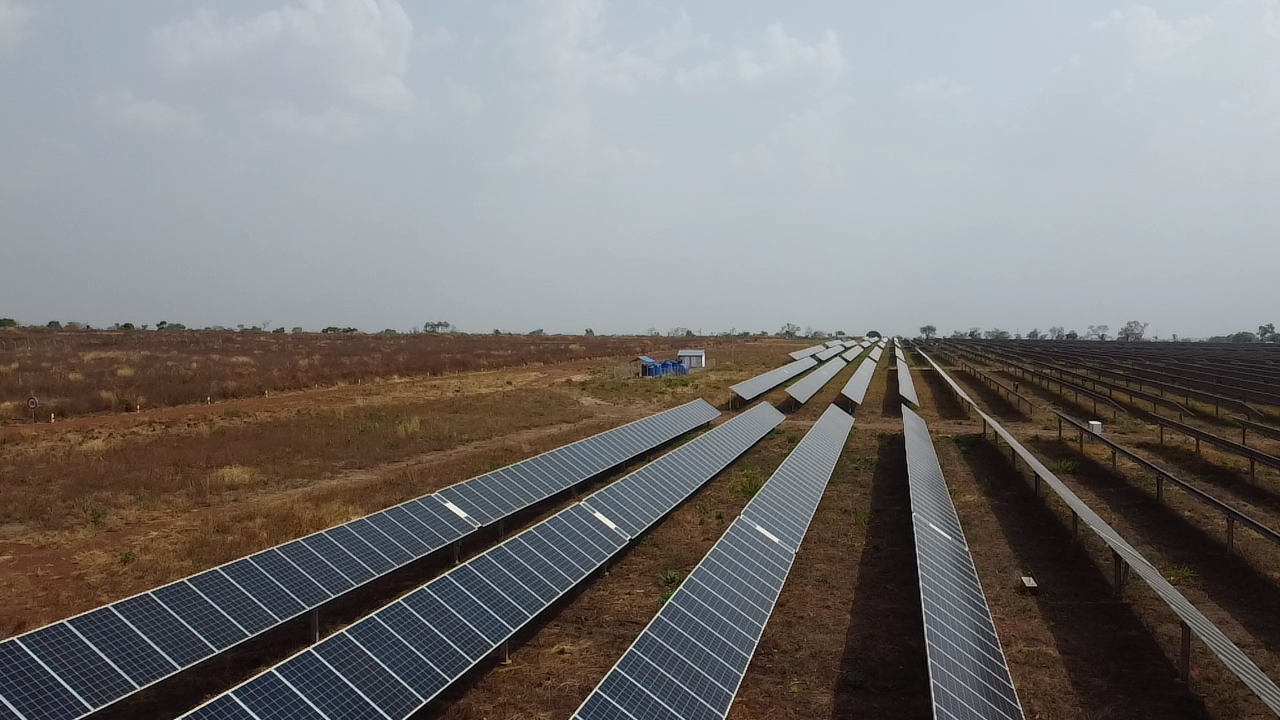Powering access to renewable energy in Africa
The African continent faces many social, economic, health, and environmental challenges. Transitioning to an energy system centered on renewable energy such as wind, solar or hydro is key for sustainable development, especially regarding mitigating the effects of climate change and providing access to clean and affordable energy for all.
This combination of climate projects benefits communities in Africa by contributing to a sustainable, secure energy supply:
In total, the portfolio saves about 1,010,740 tonnes of CO2 emissions per year.

Promoting a just transition to renewable energy in Africa
Africa faces major social, economic, health and environmental challenges. Scaling up renewable energy—wind, solar and hydropower—is a key lever for sustainable development. It reduces climate risks and expands access to renewable, affordable energy.
Electricity demand could rise significantly over the next ten years, while power generation in many places still relies on high-emission sources such as coal. To reduce CO₂ emissions in the energy sector, renewables must be expanded rapidly and fossil fuels phased out. Climate projects can accelerate this shift by unlocking additional finance for renewable generation and infrastructure.
This helps reduce energy poverty, stabilise grids and lower dependence on fossil fuel imports. It also delivers local benefits, including better power supply for households, businesses, schools and healthcare facilities, as well as new jobs. Renewable energy projects in the ClimatePartner portfolio are registered with international standards.
Four criteria for projects to meet quality thresholds
The life cycle of a climate project
A climate project has a set life cycle consisting of various phases, from the feasibility assessment to the retirement of Verified Emission Reductions (VERs).The project developer reviews the general feasibility of the project, the project design, and the financing. Then, the Project Design Document (PDD) is prepared, which contains all the basic information about the project, such as the objective, location, timeline, and duration.
In this phase, independent auditors examine the PDD and the information it contains. This phase often also involves field visits with on-side interviews and analyses. Auditors are accredited, impartial assessors who have to be approved by the relevant standard as a validation and verification body (VVB). TÜV Nord/Süd, S&A Carbon LLC., and SCS Global Services are examples of VVBs."
Once validated, the project can be registered with a standard such as the Verified Carbon Standard or the Gold Standard. All high-quality climate projects are based on international standards. They provide the framework for project design, construction, carbon accounting, and monitoring. Recognised standards make the climate project system and the projects themselves resilient, traceable, and credible.
After the climate project has been registered, the monitoring begins. Here, the project developers monitor and document the data of the project activities and progress. The duration of the monitoring phase varies from project to project: it can cover two years, but documentation over five or seven years is also possible.
At the end of each monitoring phase, a VVB checks and assesses whether the values and project activities stated in the monitoring report are correct. As with validation, visits to the project site are often part of the verification process.
Once verified, the emission reductions that were confirmed in the verification phase can be issued as VERs. The steps of monitoring, verification, and issuance of VERs are repeated regularly and are therefore considered as a cycle.
Once a VER has been used, it must be retired. This process is also reflected in the registry. If the financing of a climate project is done through ClimatePartner, the VERs are bundled in a system certified by TÜV Austria and then retired on a regular basis. This ensures that each VER can no longer be sold and is only used once, preventing double counting.
Explore our projects
Biochar for Climate Action, Healthy Soils, and Better Harvests

A certified climate project combined with additional commitment

Expansion of renewable energy generation in Asia

Ceramic water filters save CO2 and improve health

Improved cookstoves worldwide – for better health and cleaner air

A certified climate project combined with additional commitment

A certified climate project combined with additional commitment

Restored ecosystems remove carbon

Turning degraded farmlands into healthy ecosystems

Improved cookstoves - better for health and the environment















